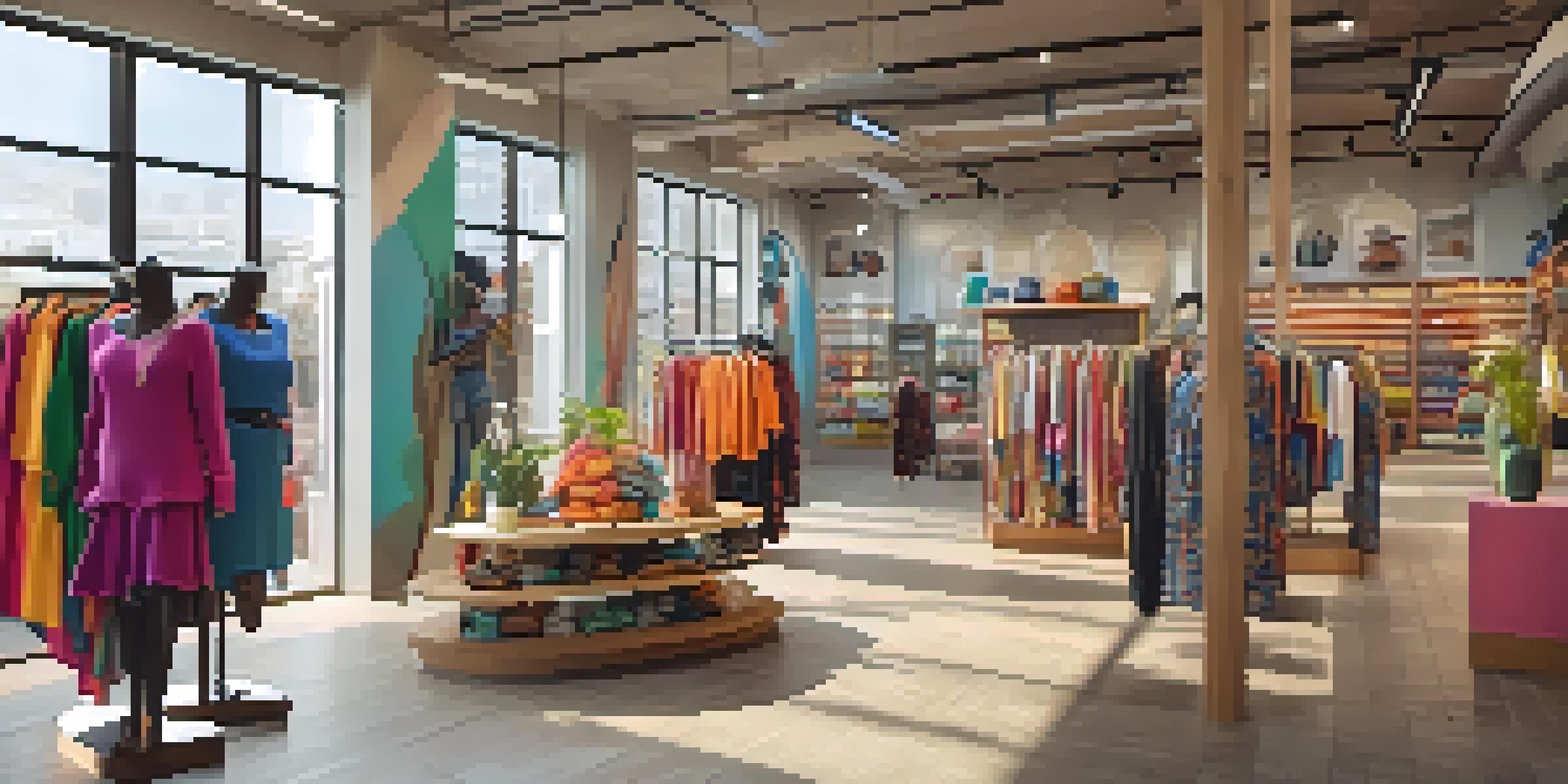Building Inclusive Fashion Communities for Diverse Consumers

Understanding the Importance of Inclusive Fashion
Inclusive fashion is more than just a trend; it's a vital movement that recognizes and celebrates diversity in all forms. It encompasses various aspects, including size, gender, ethnicity, and ability, ensuring that everyone feels represented. When fashion brands embrace inclusivity, they not only expand their customer base but also foster a sense of belonging among consumers.
Fashion is about dreaming and making it happen. It’s about creating a world where everyone can express themselves and feel included.
Imagine walking into a store and seeing clothes that reflect your identity and style. This visibility can empower individuals who often feel overlooked by mainstream fashion. By prioritizing inclusivity, brands can create a ripple effect, encouraging other companies to follow suit and rethink their approaches to consumer engagement.
Furthermore, inclusive fashion can lead to increased loyalty. When consumers see themselves represented, they are more likely to support those brands wholeheartedly. This connection breeds trust, which is essential in today's competitive market.
Identifying Diverse Consumer Needs
To build an inclusive fashion community, it’s crucial to understand the diverse needs of consumers. This means going beyond typical demographics and diving deep into the unique experiences that shape their preferences. Surveys, focus groups, and social media feedback can be invaluable tools in gathering these insights.

For instance, individuals with disabilities often face barriers in finding fashionable yet functional clothing. By listening to their needs and collaborating with them, brands can create lines that cater specifically to this audience. This shows not just awareness but a commitment to genuine inclusion.
Inclusive Fashion Celebrates Diversity
Embracing inclusivity in fashion ensures representation across various identities, fostering a sense of belonging among consumers.
Additionally, cultural representation plays a significant role in fashion. Brands should strive to incorporate diverse cultural elements in their designs, ensuring that all consumers feel seen and appreciated. This not only enriches the fashion landscape but also promotes cross-cultural understanding.
Creating Safe Spaces for All Consumers
An inclusive fashion community thrives in an environment where everyone feels safe and respected. This begins with creating spaces—both physical and virtual—that welcome all individuals without judgment. Retailers can achieve this by training staff to understand and embrace diversity.
Diversity is not a trend; it's a necessity. We need to celebrate all voices and create space for everyone in fashion.
Moreover, online platforms should be designed to promote positive interactions. Implementing strict community guidelines and moderation can help foster an atmosphere where consumers can share their opinions and experiences freely. Everyone deserves a voice in the conversation about fashion.
When consumers feel safe, they are more likely to engage with brands and share their authentic selves. This openness can lead to valuable feedback, allowing brands to adapt and grow in ways that truly resonate with their audience.
Collaborating with Diverse Creators
Bringing diverse voices into the fashion conversation is essential for building inclusive communities. Collaborating with creators from various backgrounds can lead to innovative designs that resonate with broader audiences. These collaborations can range from co-designing collections to featuring diverse influencers in marketing campaigns.
For example, a brand might partner with a plus-size model to showcase their clothing in a way that speaks directly to that community. Such collaborations not only elevate underrepresented voices but also challenge traditional beauty standards prevalent in the industry.
Understanding Consumer Needs Matters
Recognizing and addressing the unique experiences and preferences of diverse consumers is crucial for building an inclusive fashion community.
Additionally, supporting emerging designers from diverse backgrounds can enrich the fashion ecosystem. By providing platforms and resources for these creators, established brands can help cultivate a more inclusive industry and encourage fresh perspectives.
Leveraging Technology for Inclusion
Technology plays a pivotal role in making fashion more inclusive. Virtual fitting rooms, for instance, allow consumers to try on clothes digitally, catering to various body types and sizes. This innovation helps to reduce the frustration of online shopping while providing a more personalized experience.
Moreover, social media platforms can be powerful tools for amplifying diverse voices. Brands can utilize user-generated content to showcase real customers wearing their products, creating an authentic representation of their community. This not only builds trust but also encourages others to share their own stories.
Additionally, data analytics can help brands better understand consumer preferences and tailor their offerings accordingly. By analyzing purchasing patterns and feedback, companies can continuously improve their inclusivity efforts, ensuring they meet the evolving needs of their audience.
Marketing Strategies for Inclusive Fashion
Effective marketing is key to promoting inclusivity in fashion. Brands should prioritize authentic storytelling that highlights the diverse experiences of their consumers. This approach not only resonates with potential customers but also showcases the brand's commitment to diversity.
Using inclusive language in marketing materials can also make a significant difference. Avoiding stereotypes and embracing nuanced representations can help brands connect with a wider audience. This ensures that messaging speaks to everyone, regardless of their background.
Continuous Commitment is Essential
Brands must regularly evaluate their inclusivity efforts and remain adaptable to sustain their commitment to diverse communities.
Moreover, engaging in community outreach initiatives can further solidify a brand's commitment to inclusivity. By hosting events or partnering with local organizations, brands can demonstrate their dedication to fostering diverse fashion communities beyond just their products.
Evaluating Progress and Maintaining Commitment
Building inclusive fashion communities is an ongoing journey, not a destination. Brands must regularly evaluate their efforts to ensure they are genuinely meeting the needs of diverse consumers. This can be achieved through surveys, focus groups, and analyzing sales data to see how inclusive initiatives are performing.
Moreover, maintaining transparency about these efforts fosters trust with consumers. Sharing successes and challenges can encourage brands to stay accountable and open to feedback. It also allows consumers to feel invested in the brand’s journey toward inclusivity.

Lastly, it’s essential for brands to commit to continuous learning. The fashion landscape is ever-evolving, and staying informed about emerging trends and consumer needs is crucial. By remaining adaptable and responsive, brands can sustain their inclusive efforts and foster a loyal community.